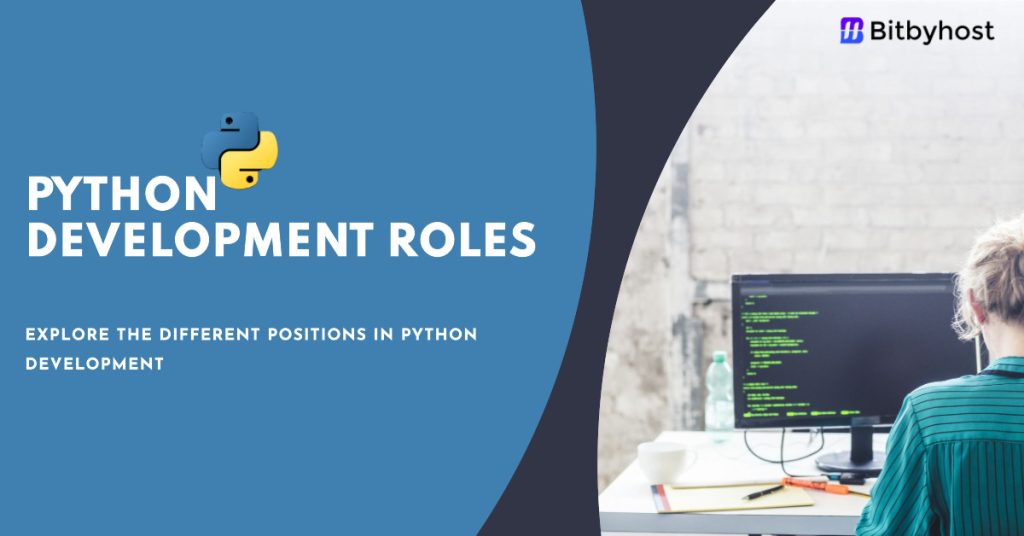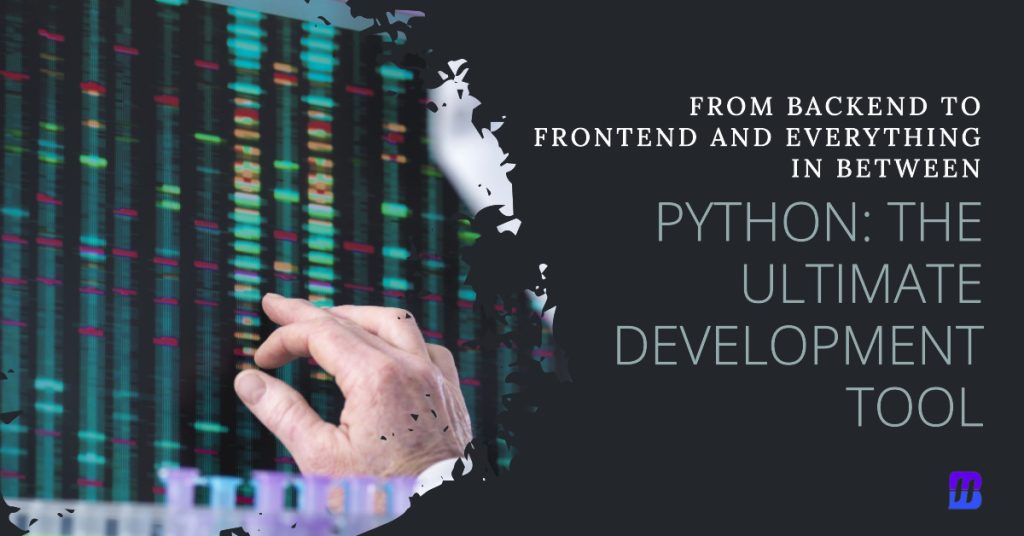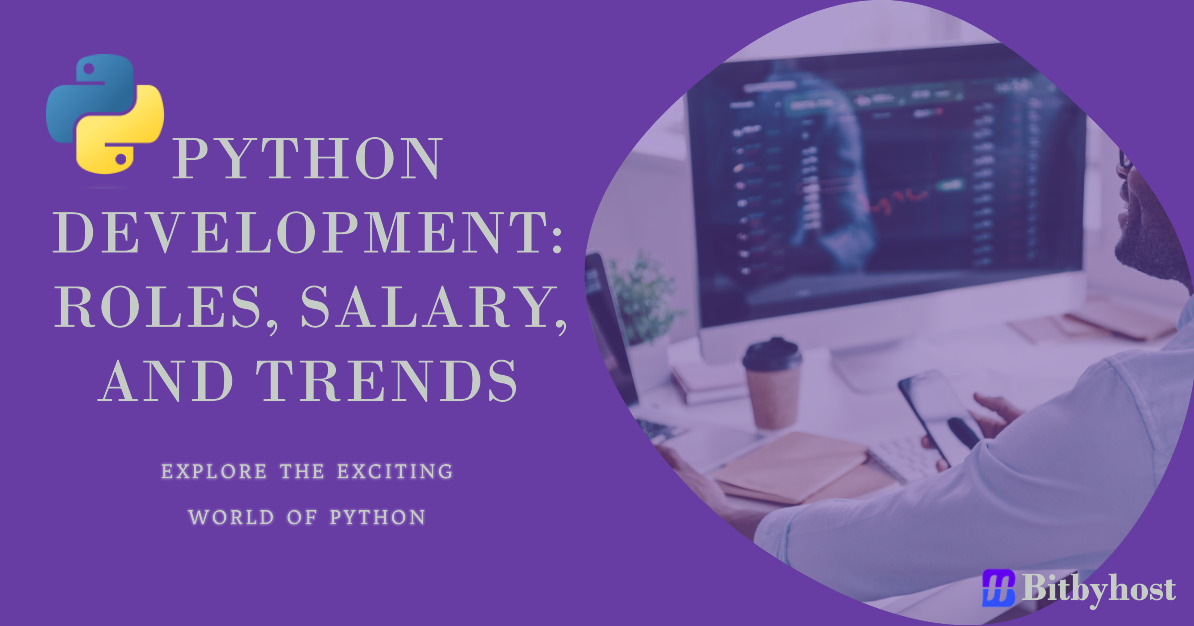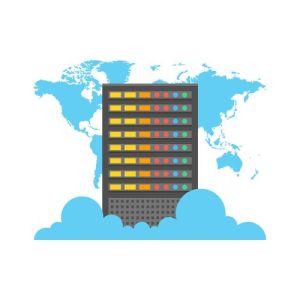Welcome to the fascinating universe of Python development, where innovation knows no bounds. In this journey, we will delve into the multifaceted realm of Python development, uncovering its significance, various roles, salary dynamics, and the ever-evolving job market trends. Prepare to embark on an exhilarating voyage through the world of Python!
Definition of Python Development
Python development is the process of utilizing the Python programming language to create, enhance, and maintain software applications. Renowned for its readability, versatility, and ease of learning, Python has become a popular choice for developers across various domains. Its syntax allows developers to express concepts in fewer lines of code than languages like C++ or Java, making it a go-to language for both beginners and experienced programmers. Python supports multiple programming paradigms, including procedural, object-oriented, and functional programming, contributing to its widespread adoption in diverse software development projects.
Importance of Python in the Software Industry
The importance of Python in the software industry cannot be overstated, as it has emerged as a versatile and influential programming language with widespread adoption. Several key factors contribute to Python’s significance in the software development landscape:
- Versatility and Readability:
- Python’s clean and readable syntax facilitates code comprehension and reduces the likelihood of errors.
- Its versatility allows developers to work on various domains, including web development, data science, artificial intelligence, machine learning, automation, and more.
- Community and Ecosystem:
- Python boasts a vibrant and extensive community of developers, fostering collaboration, knowledge sharing, and the creation of open-source libraries and frameworks.
- The Python Package Index (PyPI) hosts a vast collection of third-party packages, providing developers with ready-made solutions for a myriad of tasks.
- Ease of Learning:
- Python’s simplicity and straightforward syntax make it accessible to beginners, enabling a smoother learning curve for new developers entering the industry.
- Cross-Platform Compatibility:
- Python’s cross-platform nature ensures that applications developed in Python can run seamlessly on various operating systems without major modifications.
- Rapid Prototyping and Development:
- Python’s dynamic typing and interpreted nature facilitate rapid prototyping, allowing developers to quickly experiment with ideas and concepts.
- The language’s expressiveness enables developers to write code more efficiently, boosting overall development speed.
- Diversity of Applications:
- Python is widely employed in diverse applications, ranging from web development frameworks like Django and Flask to scientific computing libraries such as NumPy and SciPy.
- It is a preferred language for developing artificial intelligence and machine learning applications, with popular libraries like TensorFlow and PyTorch built on Python.
- Support for Automation:
- Python’s scripting capabilities make it an ideal choice for automation tasks, enabling developers to streamline repetitive processes and enhance overall efficiency.
- Scalability and Performance:
- While not as performant as low-level languages like C or C++, Python’s performance has significantly improved with the introduction of just-in-time (JIT) compilation and optimizations.
- Global Industry Adoption:
- Python is widely adopted by major tech companies, startups, and enterprises globally, emphasizing its relevance and impact in the software industry.
- Continued Growth and Evolution:
- Python’s ongoing development, regular updates, and the introduction of features in newer versions ensure its adaptability to emerging industry trends and requirements.
The software industry’s heartbeat quickens with the rhythmic pulse of Python. Its importance cannot be overstated. Python’s user-friendly nature has transformed it into a lingua franca for developers. From data analysis to artificial intelligence, Python’s influence spans far and wide.
Roles in Python Development

In the realm of Python development, various roles and responsibilities cater to different aspects of software creation and maintenance.
In Python development, various roles exist to handle different aspects of the software development lifecycle. Each role contributes to the creation, optimization, and maintenance of Python-based applications. Here are key roles in Python development:
Python Developer
Responsibilities:
- Writing efficient, reusable, and modular Python code.
- Collaborating with cross-functional teams to design and develop software solutions.
- Integrating user-facing elements using server-side logic.
- Conducting code reviews and optimizing Python applications for performance.
Data Scientist
Responsibilities:
- Analyzing and interpreting complex data sets using Python libraries (e.g., NumPy, Pandas).
- Developing machine learning models and algorithms.
- Creating data visualizations and presenting insights to stakeholders.
- Collaborating with data engineers for data processing and extraction.
Web Developer (Django/Flask)
Responsibilities:
- Building web applications using Python frameworks like Django or Flask.
- Designing and implementing RESTful APIs.
- Collaborating with front-end developers to integrate user-facing elements.
- Ensuring the responsiveness and scalability of web applications.
DevOps Engineer
Responsibilities:
- Automating deployment processes and infrastructure using Python scripting.
- Implementing continuous integration and continuous deployment (CI/CD) pipelines.
- Monitoring and optimizing system performance.
- Collaborating with development and operations teams for seamless software delivery.
Machine Learning Engineer
Responsibilities:
- Developing and deploying machine learning models using Python and related frameworks (e.g., TensorFlow, PyTorch).
- Evaluating and improving model performance.
- Collaborating with data scientists and software engineers for model integration.
Full Stack Developer
Responsibilities:
- Handling both front-end and back-end development using Python.
- Integrating user-facing elements with server-side logic.
- Designing and implementing database architecture.
- Ensuring cross-functional collaboration for end-to-end application development.
Data Engineer
Responsibilities:
- Designing, constructing, and maintaining data architecture (e.g., databases, large-scale processing systems).
- Developing ETL (Extract, Transform, Load) processes using Python.
- Collaborating with data scientists and analysts for data pipeline implementation.
Quality Assurance Engineer (Python Automation):
Responsibilities:
- Designing and implementing automated test scripts using Python testing frameworks (e.g., PyTest).
- Conducting performance testing, regression testing, and ensuring software quality.
- Collaborating with development teams to identify and resolve defects.
Systems Administrator
Responsibilities:
- Managing and maintaining system infrastructure using Python for automation.
- Implementing security measures and ensuring system reliability.
- Troubleshooting issues related to system performance and configurations.
Technical Trainer or Educator:
Responsibilities:
- Conducting training sessions on Python programming and related technologies.
- Creating educational content and materials.
- Keeping up-to-date with industry trends and incorporating them into training programs.
These roles illustrate the diverse opportunities within the field of Python development, catering to different expertise areas and contributing to the overall success of software projects.
Tools and Frameworks
Python development thrives on a rich ecosystem of tools and frameworks designed to enhance productivity and efficiency.
| Tool/Framework | Description |
|---|---|
| PyCharm | A powerful IDE with intelligent code completion and debugging for Python. |
| Visual Studio Code | A lightweight, open-source code editor with Python support and various extensions. |
| Jupyter Notebooks | Interactive notebooks for data science and machine learning with code and visualizations. |
| Django | A high-level, batteries-included framework for building robust web applications. |
| Flask | A lightweight, modular web framework suitable for small to medium-sized applications. |
| NumPy | Fundamental package for scientific computing with support for large, multi-dimensional arrays. |
| Pandas | Library for data manipulation and analysis, featuring DataFrames for efficient data handling. |
| TensorFlow and PyTorch | Open-source machine learning frameworks with deep learning capabilities. |
| Git | A distributed version control system widely used for tracking changes in source code. |
| GitHub | Web-based platform for hosting Git repositories, offering collaboration features. |
| Docker | Platform for developing, shipping, and running applications in containers. |
| Kubernetes | Open-source container orchestration platform for automating deployment and management. |
| PyTest | Testing framework simplifying the process of writing and executing unit tests. |
| Selenium | Automation testing tool for web applications supporting multiple browsers. |
| SQLAlchemy | SQL toolkit and ORM library for Python, facilitating interaction with relational databases. |
| MongoDB | NoSQL database storing data in JSON-like documents, suitable for diverse data types. |
| Jenkins | Open-source automation server for building, testing, and deploying code changes. |
| Travis CI | CI/CD service integrating with GitHub repositories for automated testing and deployment. |
| Sphinx | Tool for creating intelligent and beautiful documentation for Python projects. |
| Read the Docs | Platform automatically generating and hosting documentation from GitHub repositories. |
The extensive toolkit, from the widely adopted Django and Flask frameworks to specialized libraries like NumPy and Pandas, reflects Python’s adaptability to various development needs. The community-driven nature of Python ensures continuous innovation, with new tools and frameworks emerging to address evolving challenges.
Application Development with Python

Python’s versatility extends to application development, covering both backend and frontend aspects.
Python in Backend Development
Python is a versatile programming language that has gained immense popularity in the realm of backend development. Its simplicity, readability, and extensive libraries make it a preferred choice for building robust and scalable server-side applications. Python’s object-oriented design and support for frameworks like Django and Flask empower developers to create web applications with efficiency and maintainability.
In backend development, Python excels at handling tasks such as data processing, server-side logic, and database interactions. The language’s asynchronous features, supported by frameworks like FastAPI, further enhance its capability to manage concurrent operations, making it ideal for applications requiring high-performance and responsiveness.
Frontend Development Using Python
While Python is renowned for its backend prowess, it has also found its way into frontend development through frameworks like PyWebview and Flask. PyWebview allows developers to create desktop applications with web technologies using Python. Additionally, Python can be integrated with JavaScript libraries like React and Vue.js, providing a full-stack development experience.
In web development, Python’s role extends beyond server-side operations. It can be employed to enhance user interfaces, manage application state, and facilitate seamless communication between the frontend and backend. The versatility of Python allows developers to adopt a holistic approach, streamlining the entire development process.
Scripting Capabilities of Python
Python’s scripting capabilities contribute to its widespread use in various domains. Its straightforward syntax and ease of integration make it an excellent choice for scripting tasks. From automating repetitive processes to data manipulation and analysis, Python’s scripting capabilities empower developers to create efficient and maintainable solutions.
In scripting, Python’s extensive standard library provides modules for diverse functionalities, reducing the need for external dependencies. Whether it’s system administration, data parsing, or automation scripts, Python’s scripting capabilities make it a go-to language for quick and effective development.
These aspects collectively showcase the versatility of Python, positioning it not only as a backend powerhouse but also as a valuable player in frontend development and scripting tasks. Its adaptability and rich ecosystem continue to make Python a top choice for developers across various domains.
Salary and Job Market Trends in Python Development
Python’s widespread adoption and versatility have significantly impacted salary trends and the overall job market for developers proficient in the language. As businesses increasingly turn to Python for diverse applications, professionals skilled in Python development are in high demand. Here’s an exploration of the salary and job market trends in Python development:
Salary Trends
1. Competitive Salaries: Python developers command competitive salaries in the software industry, reflecting the language’s popularity and utility.
2. Experience Matters: Salaries tend to increase with experience. Senior Python developers with several years of experience often receive higher compensation.
3. Location-Based Variations: Salaries vary based on geographical location, with tech hubs and cities having higher average salaries compared to other regions.
4. Industry Impact: The industry in which Python developers work influences salaries. For instance, developers in finance or tech might receive higher compensation.
5. Certifications and Education: Holding relevant certifications and advanced degrees can positively impact salary levels.
Job Market Trends
1. High Demand: The demand for Python developers remains consistently high across various industries, including web development, data science, artificial intelligence, and more.
2. Diverse Job Roles: Python developers find opportunities in a range of roles, including backend development, data analysis, machine learning engineering, and automation.
3. Startups and Established Companies: Both startups and established companies actively seek Python developers, contributing to the language’s prevalence in the job market.
4. Remote Work Opportunities: The flexibility of Python development allows for remote work opportunities, making it attractive for developers seeking a work-life balance.
5. Skill Diversity: Python’s versatility opens doors to various specializations, from web development (Django, Flask) to data science (NumPy, Pandas) and machine learning (TensorFlow, PyTorch).
Future Outlook
As Python continues to evolve and maintain its relevance in emerging technologies, the job market is expected to see sustained demand for skilled Python developers. Professionals with expertise in specific Python frameworks and applications such as artificial intelligence, data science, and web development are likely to be highly sought after. Staying updated on industry trends and expanding skills in tandem with Python’s growth will position developers for success in this dynamic job market.
Conclusion
The significance of Python in the software industry cannot be overstated. Its portability, scalability, and efficiency have transformed the way applications are deployed and managed. The language’s versatility is evident in its application across diverse domains, from backend and frontend development to scripting and complex data analysis.
The roles in Python development are as diverse as the language itself, offering professionals opportunities to specialize in areas such as web development, data science, machine learning, and automation. The array of tools and frameworks available further amplifies Python’s capabilities, providing developers with a robust toolkit for creating cutting-edge solutions.
Examining salary trends and job market dynamics reveals a landscape favorable to Python professionals. Competitive remuneration, sustained demand across industries, and diverse job roles underscore Python’s prominence. The language’s adaptability to remote work aligns with evolving work preferences, and the ever-expanding skill diversity ensures Python developers remain sought after.
As we peer into the future of Python development, the outlook is bright. Python’s integration with emerging technologies, its role in serverless computing, and its prominence in edge computing all point to continued growth and relevance. The challenges posed, such as security considerations and the complexity of managing containerized applications, are met with evolving technologies and best practices.
FAQ: Python Development
- Is Python a good language to learn for beginners in programming?
Answer: Yes, Python is widely regarded as one of the best programming languages for beginners due to its simple and readable syntax. - What roles are available for Python developers?
Answer: Python developers can fill various roles, including web developer, software engineer, data scientist, machine learning engineer, and more. - Which Python frameworks are popular for web development?
Answer: Some popular Python web development frameworks include Django, Flask, and Pyramid. - What are the key Python libraries used in data science?
Answer: Important Python libraries for data science include NumPy, Pandas, Matplotlib, and Scikit-Learn. - Do Python developers earn competitive salaries?
Answer: Yes, Python developers often enjoy competitive salaries, and pay can vary based on experience, location, and specific job roles.







